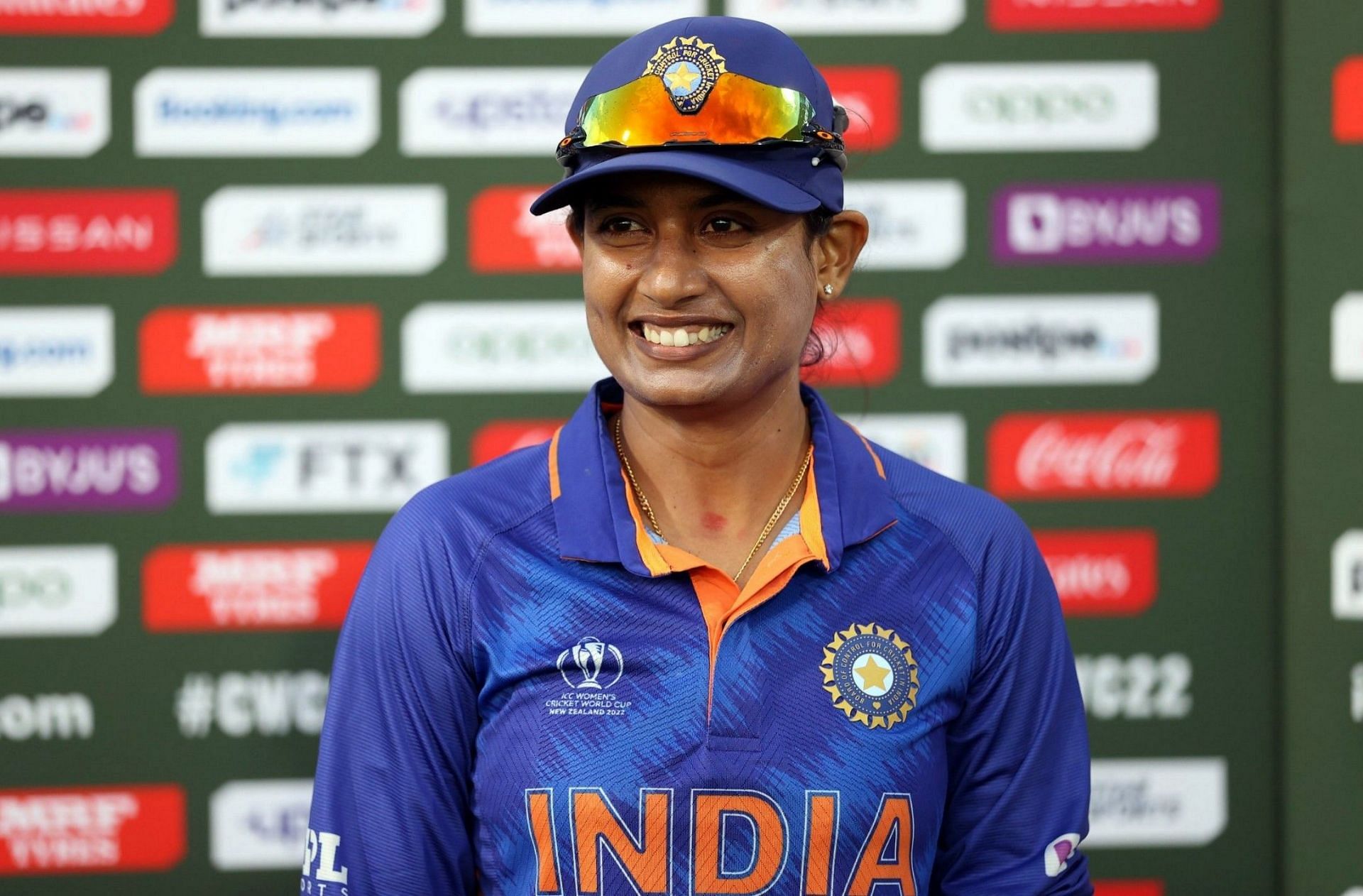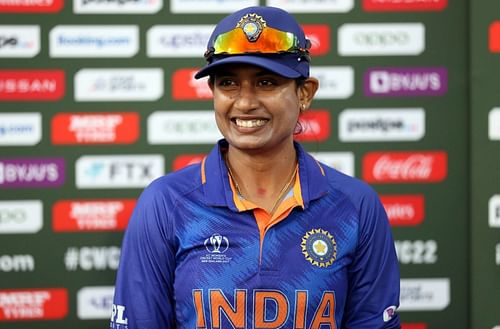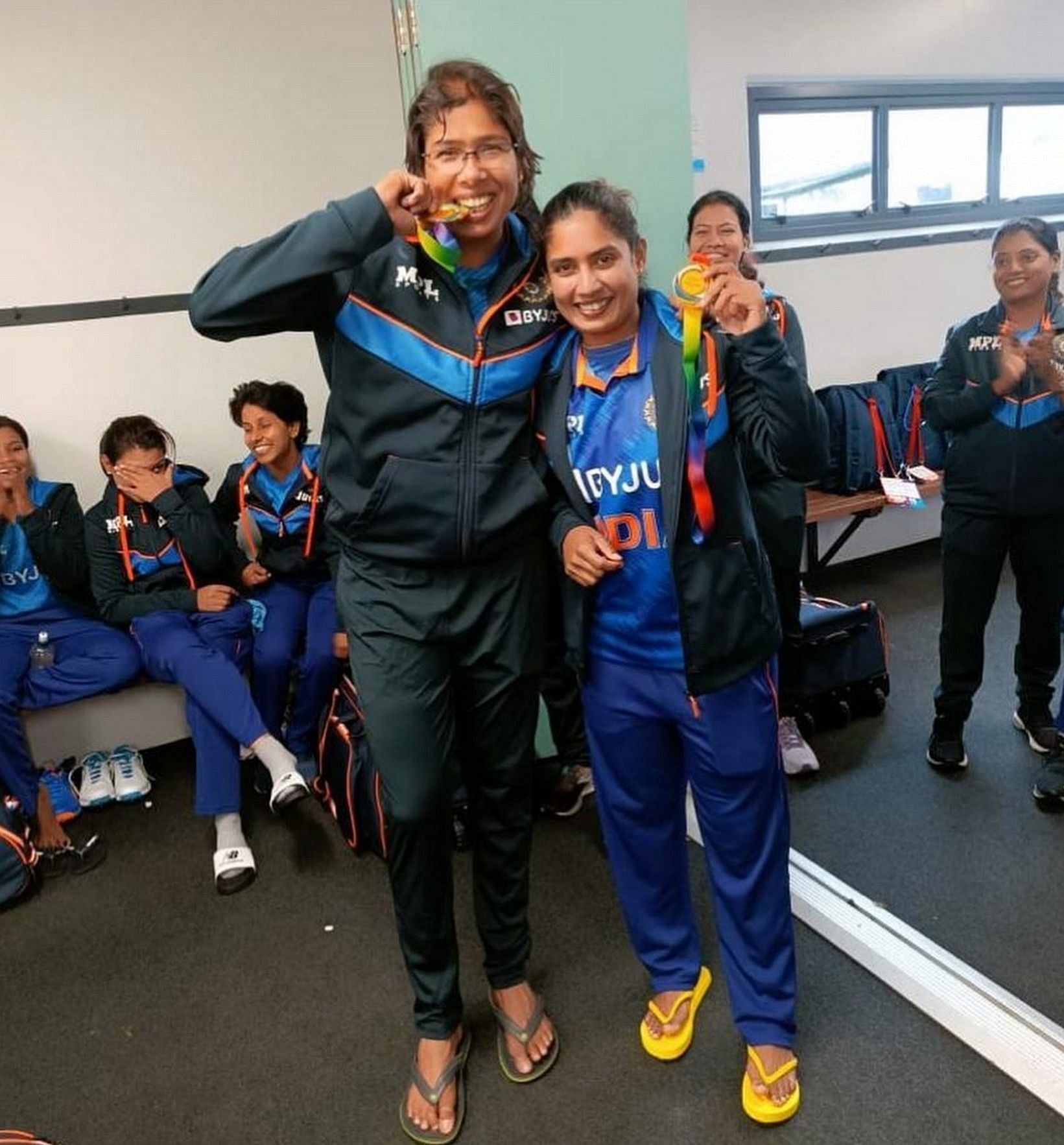
"I want to keep my options open" – Mithali Raj on playing in the inaugural Women’s IPL after winding up her glorious international career

Mithali Raj’s impact on Indian women’s cricket cannot be gauged by her mountain of runs alone. In a country whose denizens have traditionally worshipped the ‘quasi-divine’ male cricketers and happily ignored their female counterparts, Mithali has championed the liberation of women’s cricket from utter obscurity.
It’s fair to say that Mithali's 23-year-long international career is symbolic of the coming-of-age story of Indian women’s cricket. Yet, she made her foray into the sport with no such goal in sight. As funny as it may seem, the legendary batter was introduced to cricket because she was too lazy in her childhood!
With her unwavering quest for excellence and disciplined work ethic, Mithali, along with her fellow torchbearer Jhulan Goswami, has put Indian women’s cricket on the world map and inspired innumerable young girls to pick up a cricket bat.
From being an amateur pursuit to becoming a lucrative profession, women’s cricket in India has indeed come a long way. Hence, when we see Smriti Mandhana, Harmanpreet Kaur and Shafali Verma get hefty paychecks and enjoy nationwide fame today, it’s an ode to Mithali and Jhulan’s long struggle to forge an identity for the Indian women’s team amid financial woes and poor infrastructure.
No wonder the whole country came to a standstill when Mithali announced her retirement from all forms of international cricket on June 8. Riding her blade, the Indian women’s team has witnessed an epic journey over the past two decades. It’s now up to posterity to build on her legacy and become a champion side capable of winning ICC trophies regularly.
In a freewheeling chat with Sportskeeda, Mithali looked back at her illustrious career and spoke about her role in transforming Indian women’s cricket. The former India captain, who led the Women in Blue to two World Cup finals in 2005 and 2017, also played a rapid-fire round with us where she hinted at the possibility of participating in the inaugural women’s IPL next year. Here are the excerpts:
Q: We are talking in a special week. June 26 was the date on which you made your international debut 23 years ago. After announcing your retirement, have you felt over the past few days that you have a little bit more fuel left in the tank, perhaps to sustain yourself until the Commonwealth Games?
Mithali: See, the Commonwealth Games will be played in the T20 format. I retired from T20s in 2019, so the Commonwealth was never in the scheme of things for me.
Q: How many years has it taken the Indian team to establish that women’s cricket can be a financially viable career option?
Mithali: I think the introduction of central contracts for women cricketers in 2016 was a significant move by the BCCI. It has definitely shed light on the fact that cricket can be a lucrative career option for our girls.
Q: When was the first time you realized that you had become a role-model?
Mithali: I’ve never looked at it that way (laughs). For me, the responsibility of the team increased when I was made the vice-captain in 2002. I was scoring heaps of runs in domestic cricket at the time and after breaking the world record for the highest individual Test score (214) in 2002, a lot of responsibilities were thrust on my shoulders.
While growing up, I never had a female cricketer as my role-model because the women’s matches were not televised. Even when I started playing, I didn’t know about the great Indian cricketers of the past like Sandhya Agarwal, Diana Edulji and Shantha Rangaswamy. It was only after I made it to the senior level that I got to know them.
From the 2017 World Cup onwards, a lot has changed for women’s cricket globally. Since the matches were televised and they were followed by people from various spheres, the sport became a brand.
Many young girls began to identify women cricketers as their role-models. The visibility of the sport has increased as we’ve been appreciated by a lot of people and the quality of the broadcast has also improved. There are no exclusive boys’ academies anymore. Every coach is willing to train female cricketers. Parents, too, are supportive of their daughters’ choice to pick up the sport.
Q: You were initiated into the sport at an all-exclusive boys’ academy. What were the pros and cons of playing with the boys at such a tender age?
Mithali: I didn’t enrol myself there, but that’s how I was introduced to cricket as my brother used to go to the academy. I don’t see any disadvantages in training with the boys. It all depends on how you perceive training with the boys. When I enrolled myself in an academy in my own school, my then coach would get some boys on weekends so that I could train with them.
Those boys were not my age, they were quite senior to me. Playing with boys really helps you because they are very competitive. Initially they think, she is a girl, so she won’t hit us hard. But once you hit them, you can be rest assured that they will aim for your head with the next delivery (laughs). That really brings the best out of a girl. You have to fight very hard to earn the minimum respect; nothing comes easy in life.
Q: Looking back in hindsight, would you say the 2017 World Cup was the highest point of your career?
Mithali: It was one of the highest points of my career, if not the highest. The 2017 World Cup marked a very significant turn in women’s cricket. My world record for the most runs in women’s ODIs and the 2005 World Cup are also very dear to me. The 2005 World Cup is special because we hadn’t come under the aegis of the BCCI, yet managed to reach the final with limited resources.
The campaign instilled the belief in us that we’re not mere participants, but are capable of becoming a strong team if given proper facilities. Once the BCCI took control of women’s cricket in India, things changed drastically.
Q: Back in the early 2000s, international women’s matches were few and far between. As a team, how did you keep your motivation intact?
Mithali: Going back to those years when there were long breaks between the two series, it was very difficult [to stay motivated]. Whatever momentum or rhythm a team had would get broken due to an eight-month-long gap.
As a player, it was very tough to be consistent. In today's era, even if you’re out of form, you know that after a series there’s one more series within the space of a month, so you’re constantly training. But back then, if you were out of form, you had to wait eight to nine months for the next series.
It was also very monotonous to train in the nets during the breaks. At the end of the day, you want to perform in a match. It was taxing, but fortunately, I’ve never experienced a prolonged lean patch in my long career. I've never believed in mediocrity and that’s how I took to my training. There were days when I didn’t want to get up in the morning, but that was something I couldn’t afford if I had to be the best in my field.
Q: As you said, things have now changed drastically compared to your formative years. As a mentor, how do you ensure that young girls don’t get swayed by the huge amount of fame and money coming so early in their careers?
Mithali: I guess it’s important more than ever to have a mentor or a parent who can show you the real picture and is there to hold you when you sway. Aiming for glory and fame is not a bad thing. After all, this is what we aspire for. Without money, nobody wants to get into anything because you invest your time and energy in a field.
At the same time, you need to understand that seeking attention beyond a limit can prove to be harmful. A youngster can forget the very essence that has brought her to the level of playing for India. It’s important to have someone who can look through you, tell you the truth and get you back on track.
Q: Cricket has traditionally been viewed through patriarchal lens. That’s why we still use terms like ‘Gentleman’s Game’, ‘Third man’, ‘Man of the Match’ etc. How necessary is it for women’s cricket in particular to be more inclusive for women in various capacities like coaching, umpiring, broadcasting and journalism?
Mithali: Things are gradually changing. In this year’s Women’s World Cup, for example, you would’ve seen a lot of women match officials. It was the first time that the ICC consciously promoted them on such a big platform. As far as coaches are concerned, there are many female coaches in India who are doing their levels at the National Cricket Academy (NCA).
We also saw that all three coaches were women in this year’s Women’s T20 Challenge. These changes are happening, but to expect an overnight transformation isn’t fair. Everything has to go through a process. In a year or two, you’ll see a lot more women being involved in different roles related to cricket.
In fact, when somebody asked me about my post-retirement plans a few days ago, I told him that I’m happy to be in a time when there are so many avenues for women in cricket.
Q: In men’s cricket, several players like Ben Stokes and Glenn Maxwell have come out and talked about mental well-being. Since women’s cricket has become so rigorous now, do you think sports psychologists should accompany the teams on every tour?
Mithali: I think when a cricketer reaches the level of playing for India, he/she must have gone through several phases where they were challenged. The road to playing for India is strewn with obstacles. The number of matches has increased with new leagues coming in, so the entire calendar is pretty much packed.
You’re constantly jumping from one format to another. Sometimes, it can be natural to feel mentally drained out. It depends on a particular individual if they want to take the help of a sports psychologist or if they think a break can help them more.
The ways to cope with mental stress vary from person to person. The first thing is to identify it. How many of us can identify stress? More often than not, when we’re not in good form, we give more importance to our technique and timing instead of our mental health.
Q: What are the chances of the Indian women’s team in this year’s Commonwealth Games?
Mithali: The team definitely has the potential to do well in the Commonwealth Games. That said, when we head into a big event, preparation is very important. You need to make the most of the available resources and be tactically astute in such big tournaments. If these things work out, I think we’ll have a good shot at a podium finish.
Q: Where do you think lies the gap between India and the top women’s teams like Australia, England and South Africa? How can this gap be bridged?
Mithali: The gap can be bridged through monitored training sessions. Our girls work hard in terms of fitness, but one needs to put in a consistent effort towards being fit. It shouldn’t be like you’re fit for only half-a-year because the season lasts only half-a-year. Fitness is something you need to maintain throughout your playing career.
Since we have so many young girls in the team at the moment, their fitness levels should only go up. Once you work on your fitness, your body language and body movement will get better. It’s easy to say that our girls are not like the New Zealand players or the Australian players, but one needs to understand that those players are physically stronger than us.
Even their food habits and cultures are different. Those countries have a sporting culture. For us sport isn’t a hobby anymore, it’s our profession. We should definitely try to be fitter in a bid to close the gap. Skill-wise, we are anyday better than them.
Q: The Women’s Big Bash League (WBBL) and The Hundred Women’s Competition have been quite successful in terms of unearthing new talent. This year, we’ll also see the inaugural Women’s Caribbean Premier League (WCPL). The Women’s IPL is likely to start in 2023. Do you think the BCCI should’ve launched the tournament much earlier?
Mithali: I don’t think we are late. There are a lot of factors involved in launching such a big event. It would have taken the board at least a couple of years to sort things out before launching the Men’s IPL as well. Earlier, we didn’t have a big pool of women cricketers in India.
However, over the past couple of years, a lot of domestic players have come up the ranks and the Women’s T20 Challenge has played a big part in this. Shafali [Verma] came up through this tournament in 2019 and this year, we’ve seen Kiran Navgire do well.
If the board has said they want to launch the Women’s IPL next year, they are clearly working on it. We have to understand that launching a big tournament is not just about forming teams. You need to manage the logistics as well.
Q: Your biopic, 'Shabaash Mithu', will be released next month. What are the aspects that you wanted Tapsee Pannu to be careful about while portraying you?
Mithali: Unfortunately, I couldn’t be a part of the making of the film as I was playing at the time. The preparation for the World Cup took away a lot of my time. I left everything to the director [Srijit Mukherji], Tapsee and the production house.
Acting is Tapsee’s forte, but cricket skills are not. She took her time and worked very hard to mirror my batting style. I told her to work hard on the shot I’m identified with, which is the cover drive.
The way the teaser and the trailer have come out, I can see that she has worked very hard to ape my walk to the crease and my batting style with the floppy hat on. I haven’t yet seen the rough cut of the movie, but I’m looking forward to the release.
Q: You and Jhulan Goswami have been two pillars of the Indian women’s team. Was there any rift between the two of you over the captaincy issue?
Mithali: There was never any friction with Jhulan. We were very competitive against each other at the U-19 level, but it’s always the case between a bowler and a batter. She wanted to take my wicket and I wanted to score runs off her. I like competing against her because she’s the best bowler in India. We’ve always been good friends.

RAPID-FIRE ROUND
Q: Your favourite holiday destination?
It’s a tie between New Zealand and South Africa.
Q: Your favourite home-made food?
Anything that is cooked at home by my mother.
Q: You’re a bibliophile. What is your favourite genre?
I love the fantasy genre. The ‘Percy Jackson’ series is one of my favourites.
Q: Which rival bowler brought the best out of you?
I would’ve loved to play more against Lucy Pearson, but she retired four years after I broke into international cricket. She troubled me initially. I also enjoyed my contests against Katherine Brunt. I would’ve loved to mention Cathryn Fitzpatrick, but we didn’t play against Australia as frequently as we did against England.
Q: A successful captain has all the makings of a good administrator. Do you agree?
Captaincy definitely teaches you man-management and how to utilize your resources efficiently. Like administration, captaincy is something that you learn on the job.
Q: Which Mithali Raj record is unlikely to ever be broken?
I don’t know (giggles). All records are meant to be broken.
Q: Laura Wolvaardt or Smriti Mandhana – who’s a bigger threat to your international batting stats?
I would say Laura Wolvaardt because she’s younger (laughs). She had a great World Cup and has been consistent for a long while. She has evolved a lot since I first saw her in South Africa in 2019.
Q: Can Sophie Ecclestone surpass Jhulan Goswami’s record for the most international wickets?
We always think that young players can easily achieve such records as they have longer shelf lives. However, with the way women’s cricket is evolving and players are occupied throughout the year, sometimes you doubt if they can survive for too long. Considering Sophie’s age and talent, I think she can achieve the record. It’ll be interesting to see if she can sustain herself and replicate these performances year after year.
Q: Can we expect to see you play in the inaugural Women’s IPL next year?
I want to keep my options open.
Q: Which franchise would you love to represent in the Women’s IPL?
It’s a tough question (laughs). It depends on the franchises that would want my services. I’ll keep my options open.
Q: Apart from Smriti Mandhana, which other young batter can become a future superstar of the Indian women’s team?
I would pick two players – Yastika [Bhatia] and Shafali. Both are very talented and have utilized their chances pretty well.